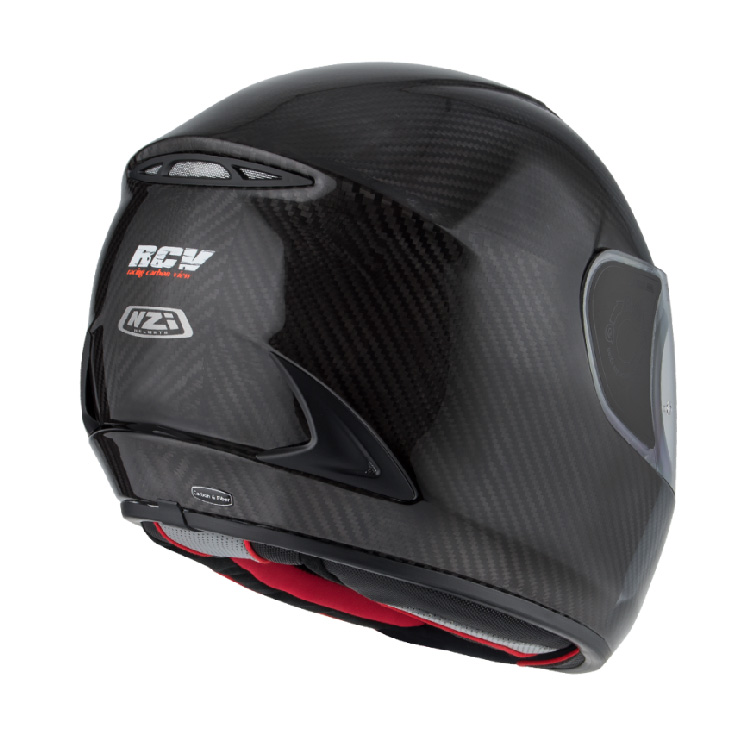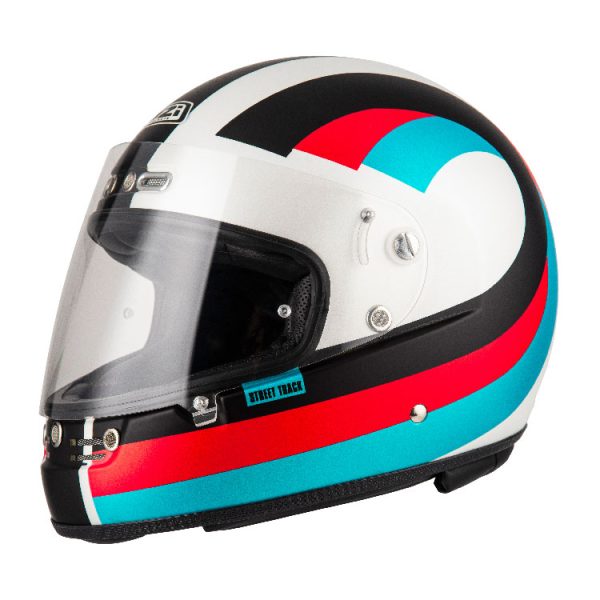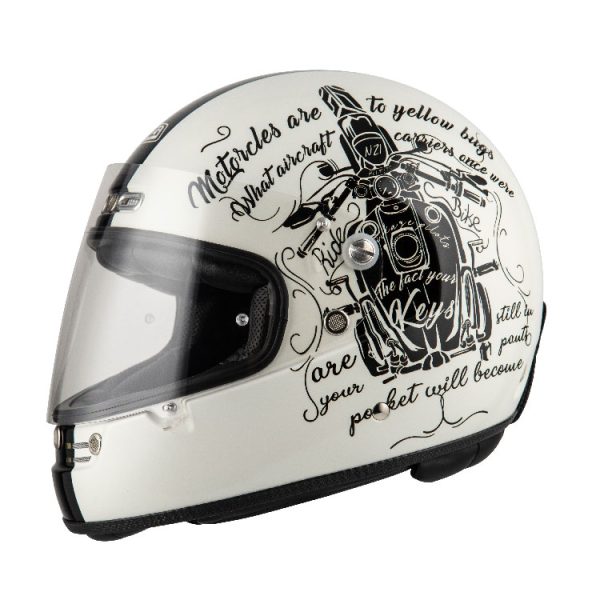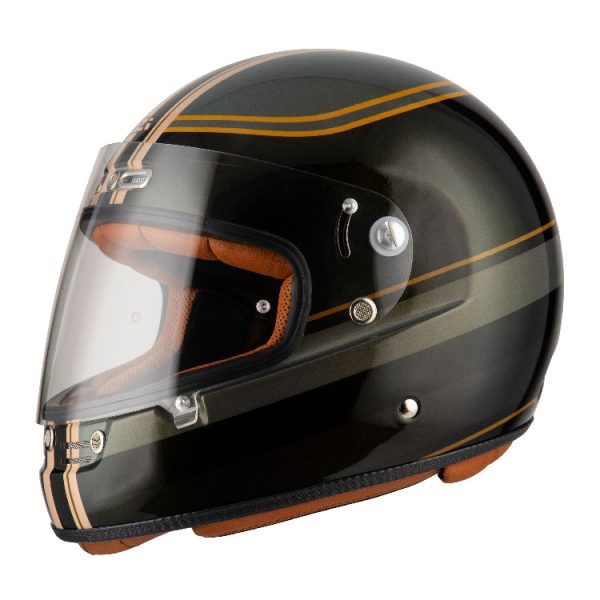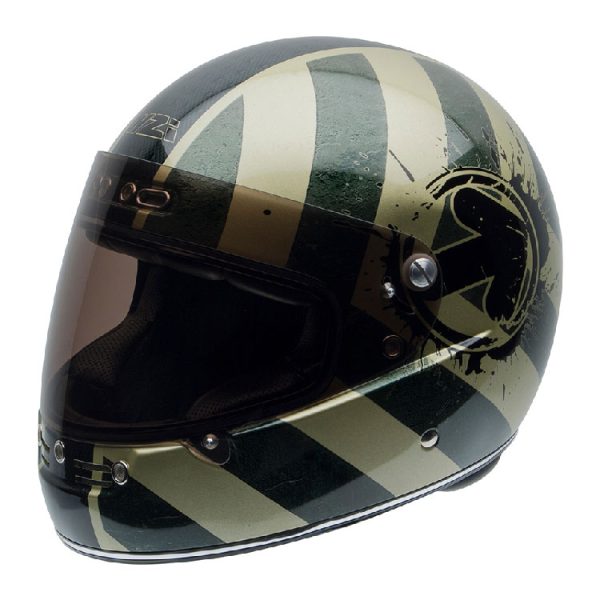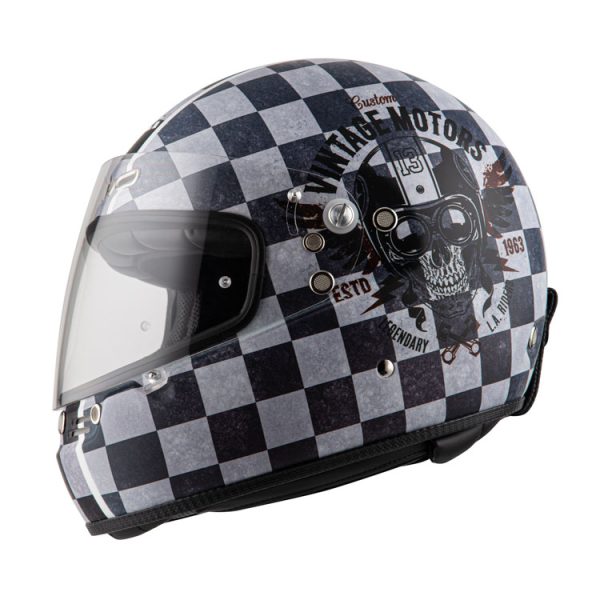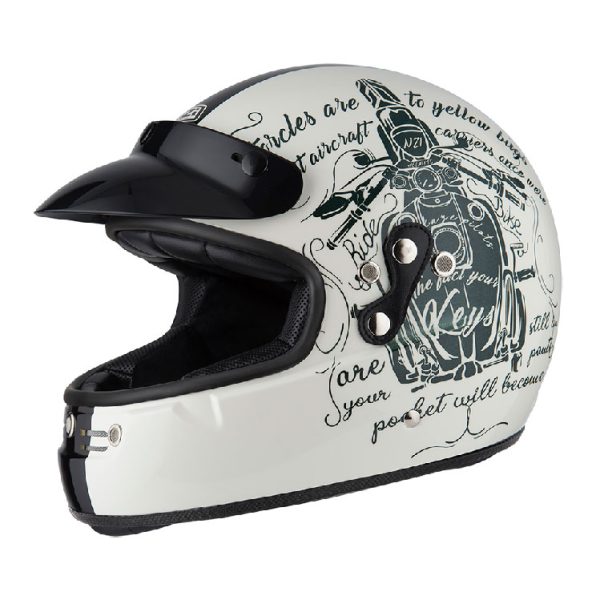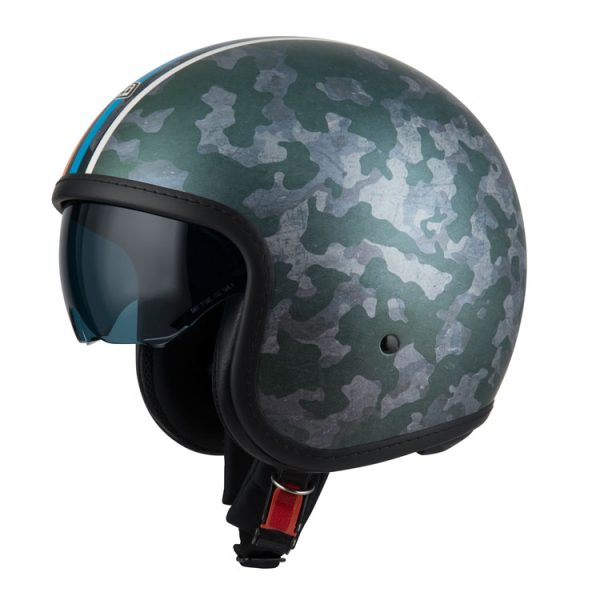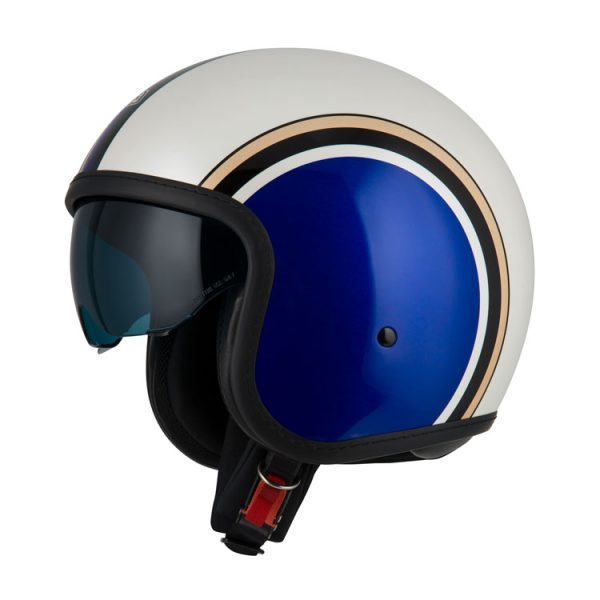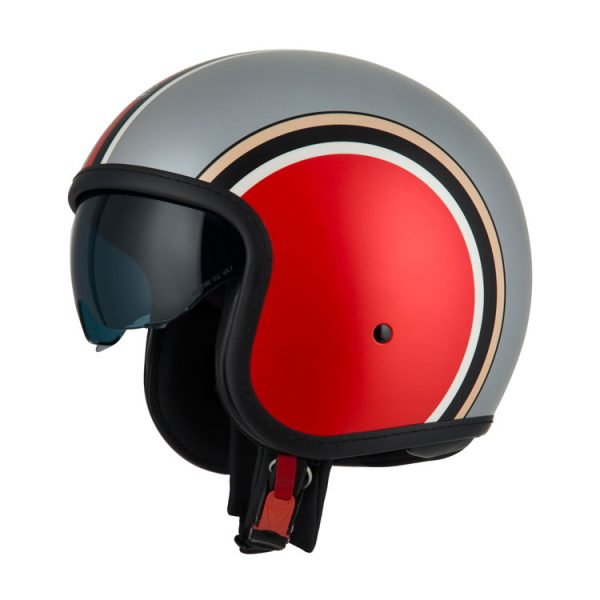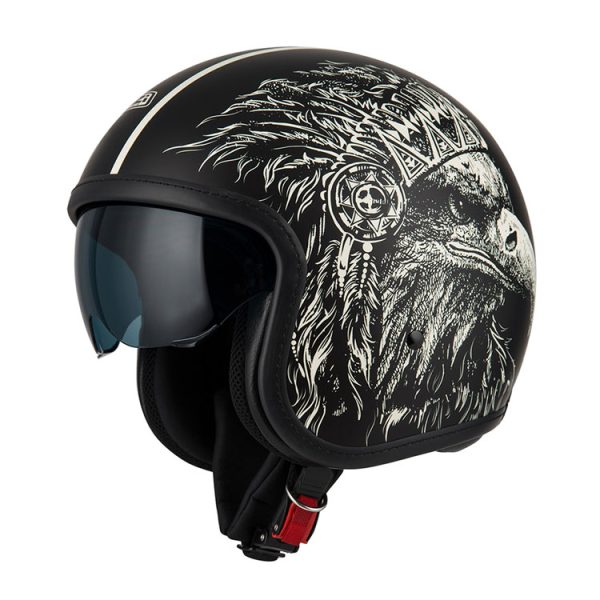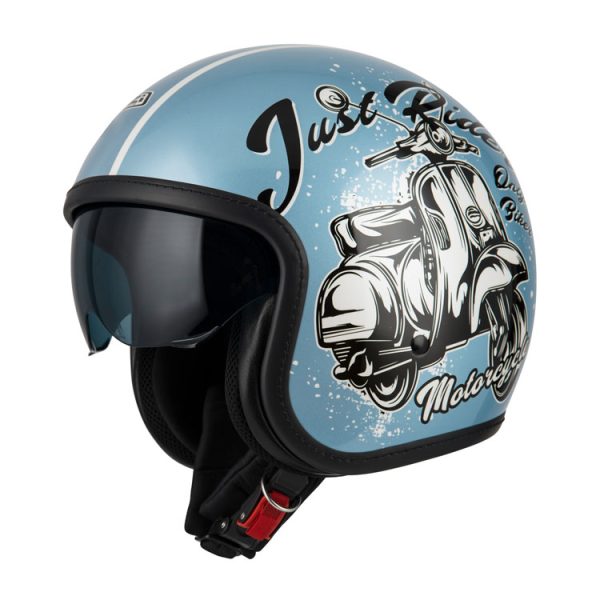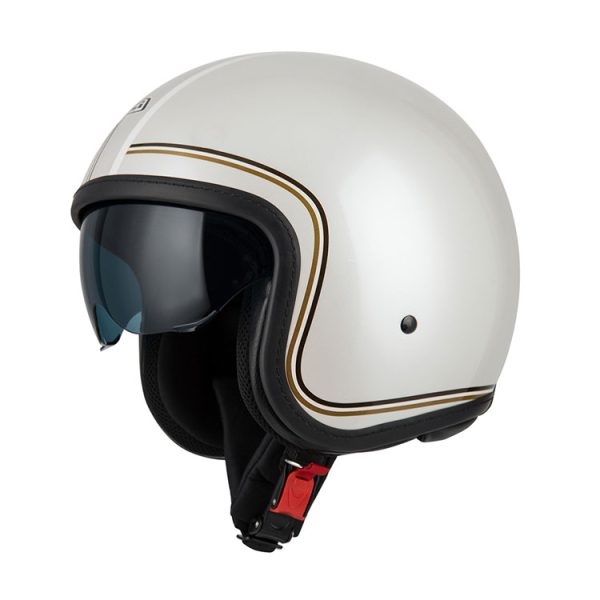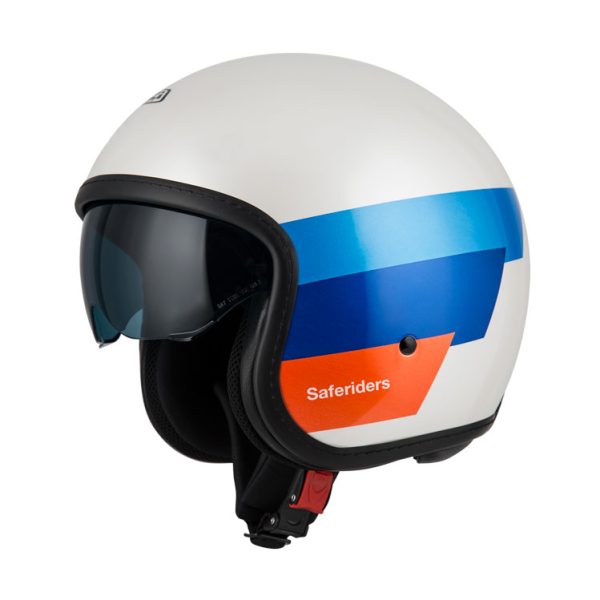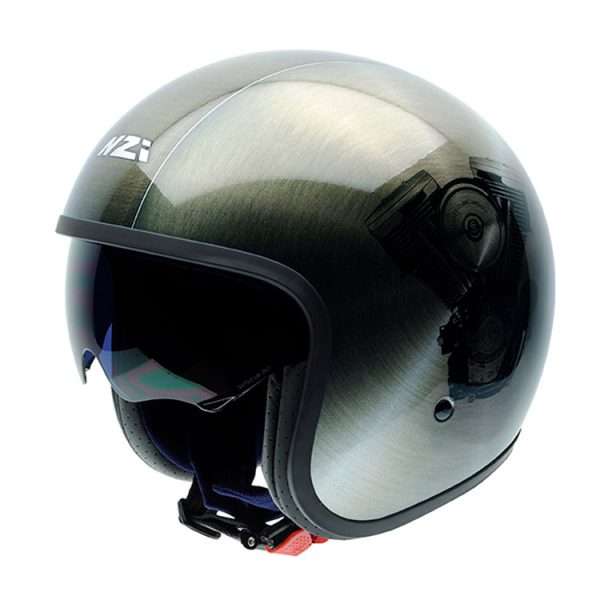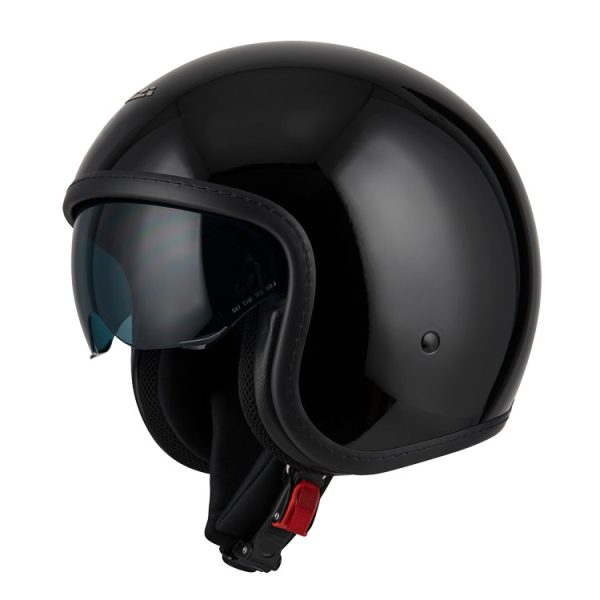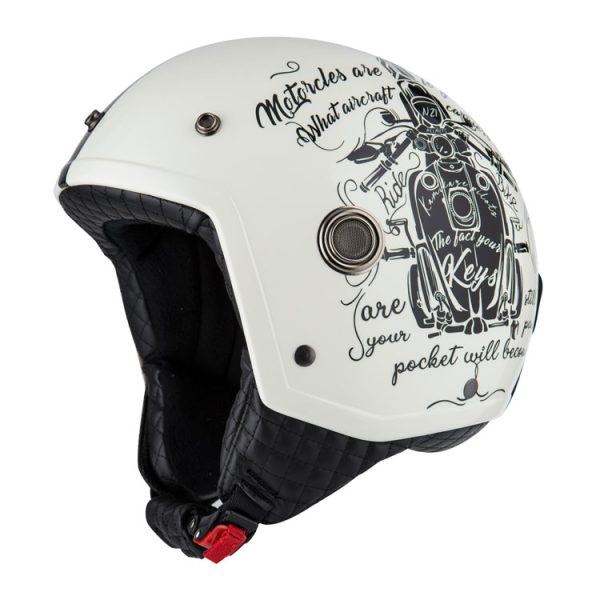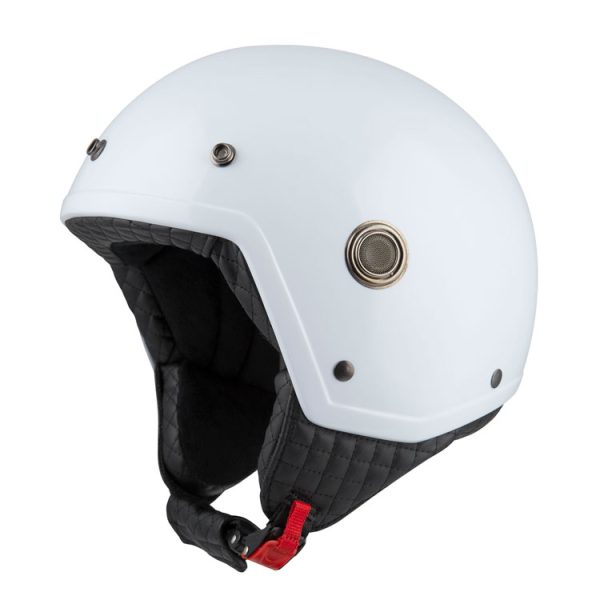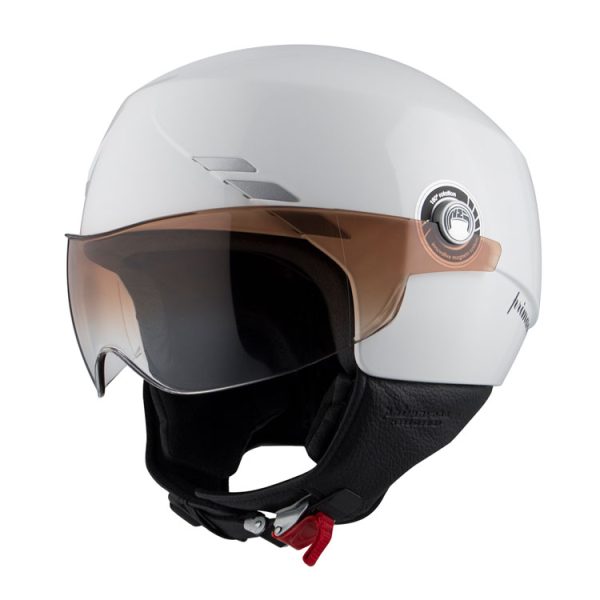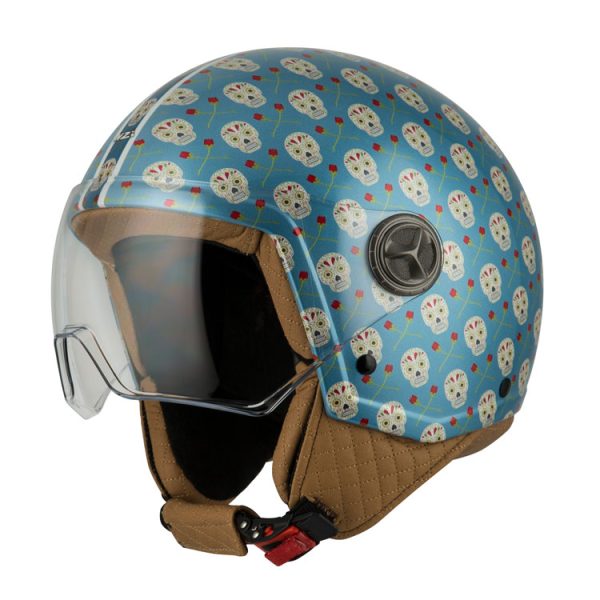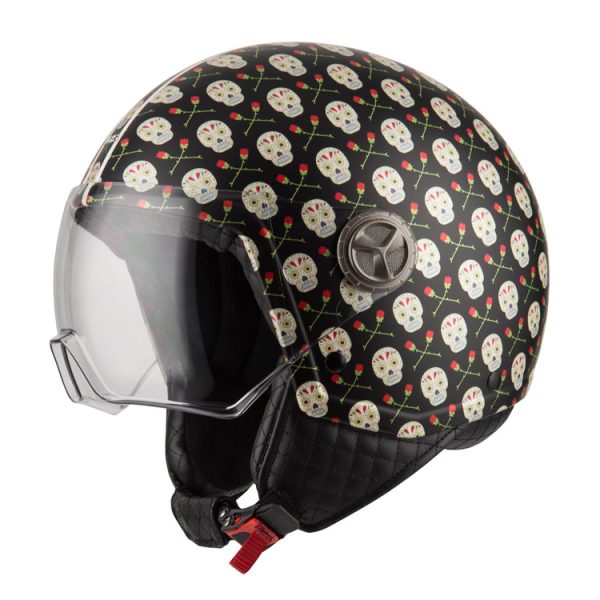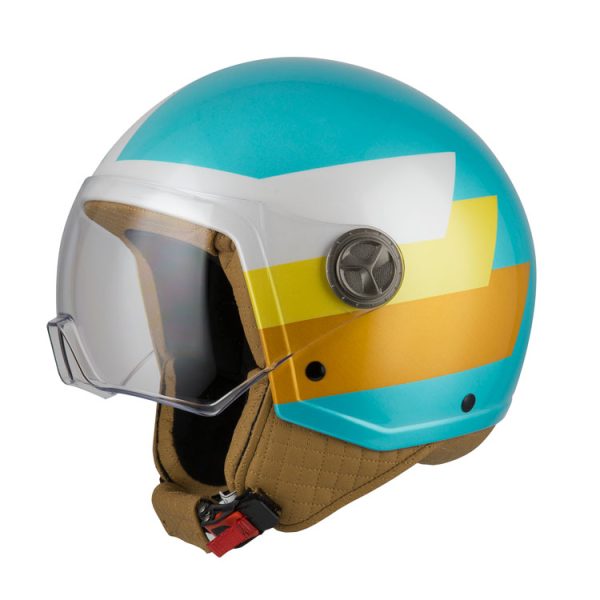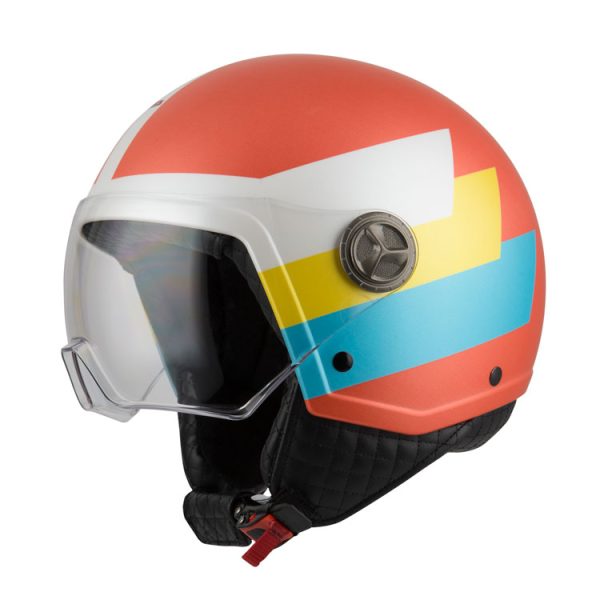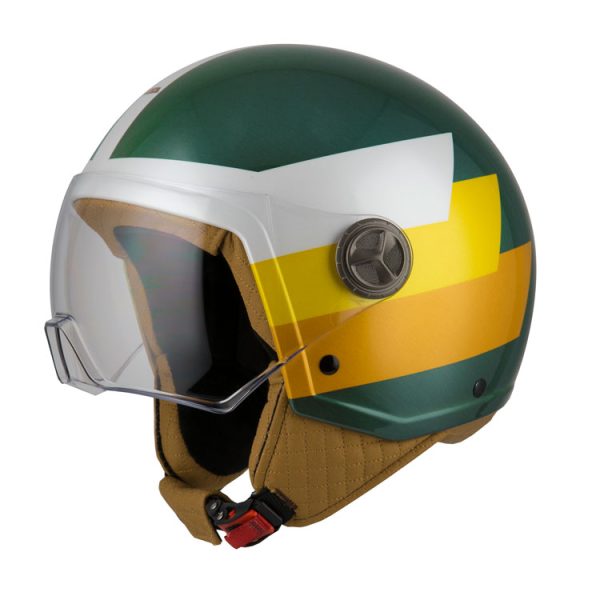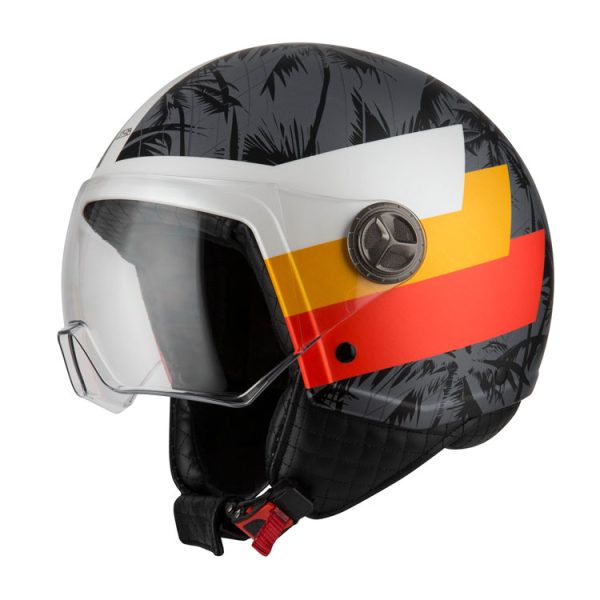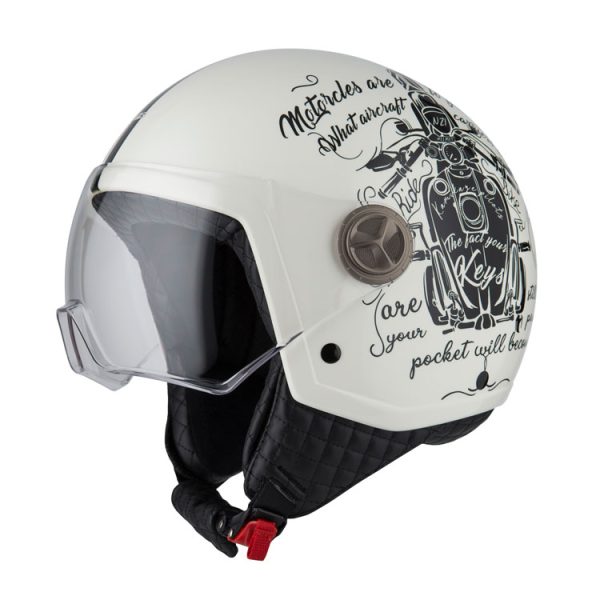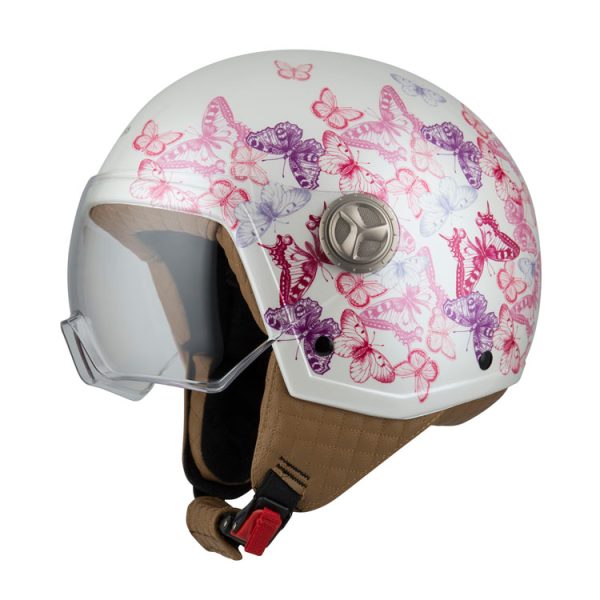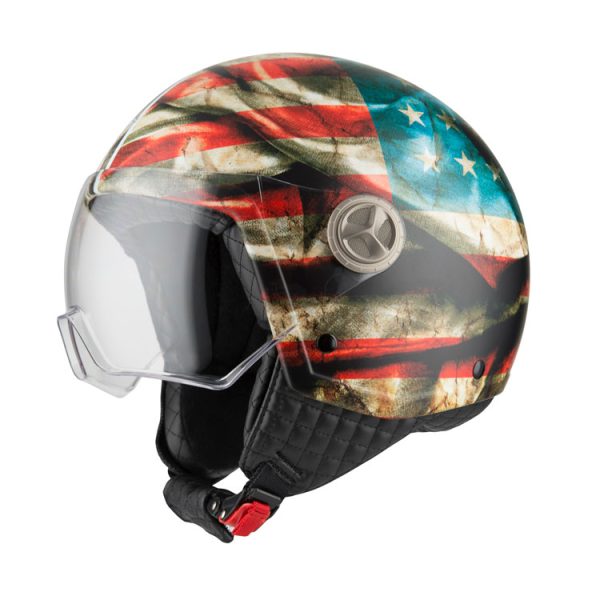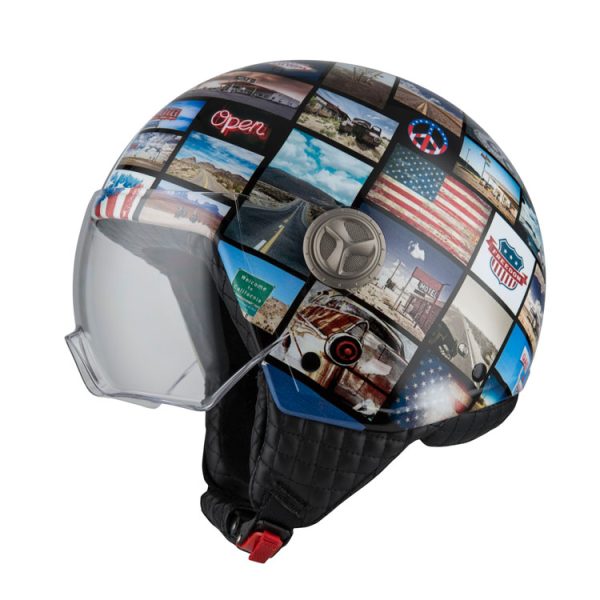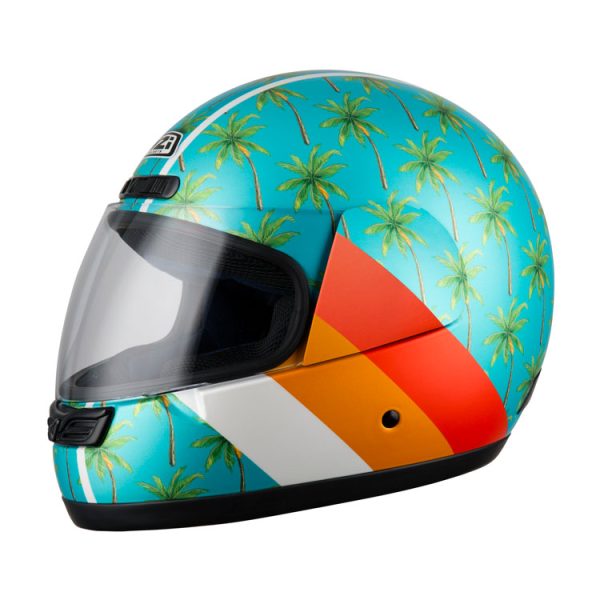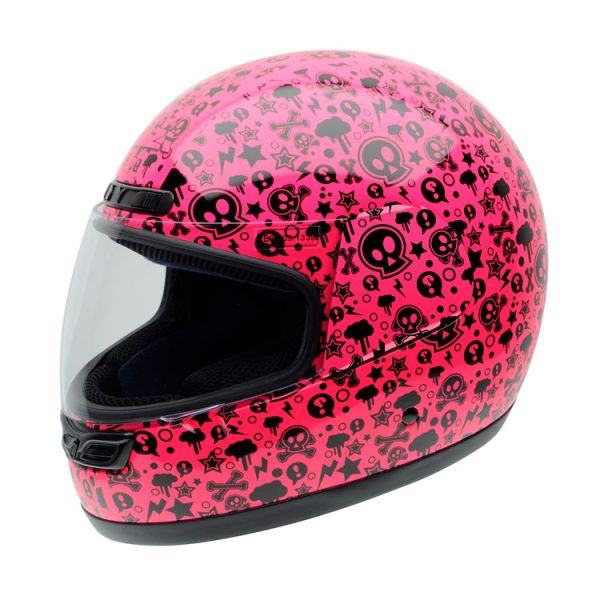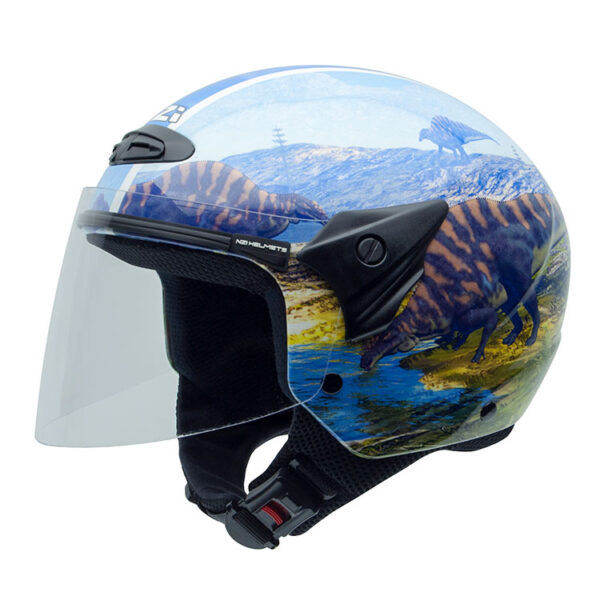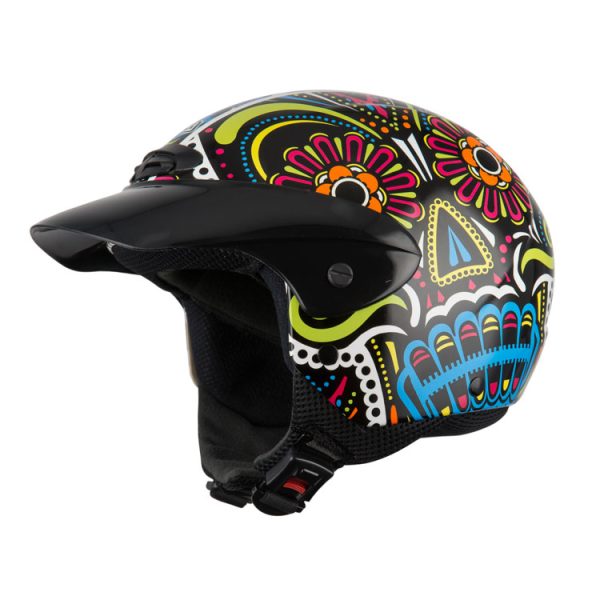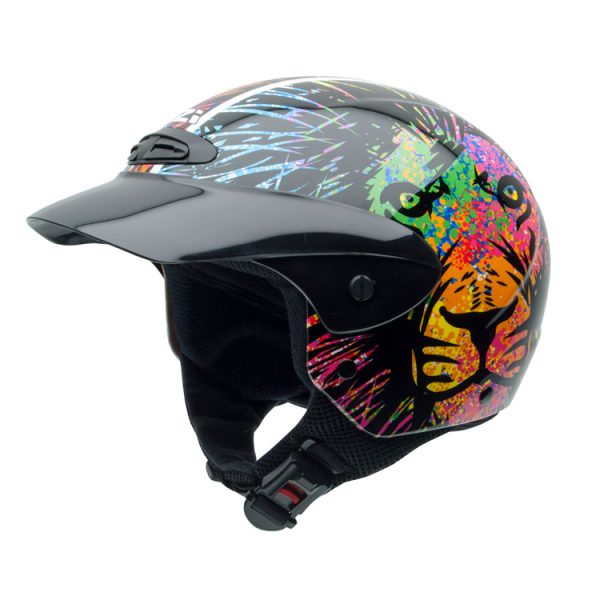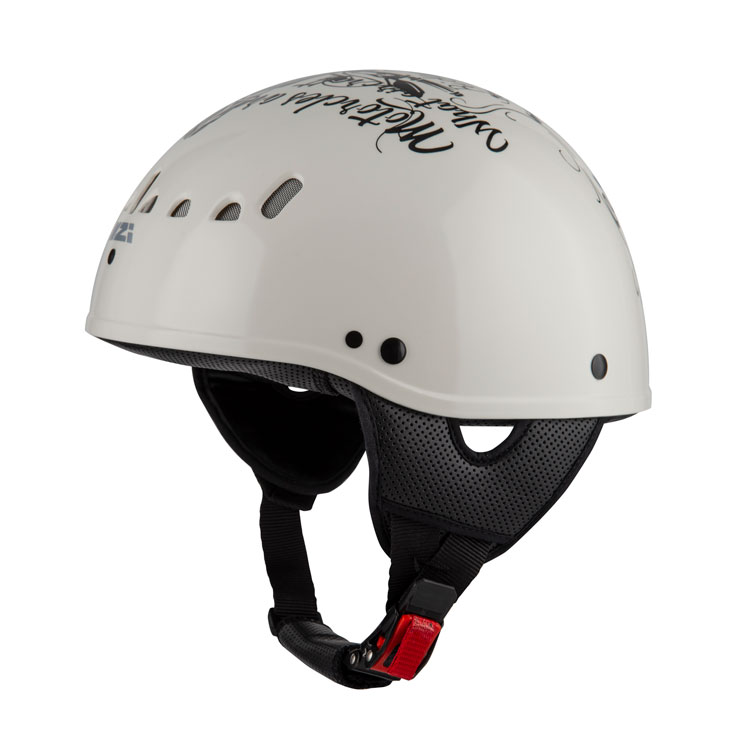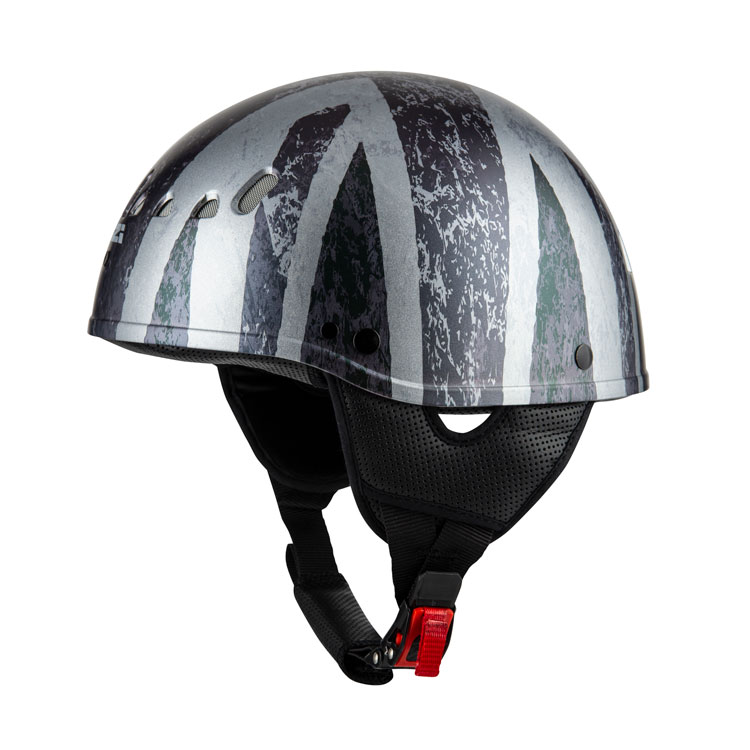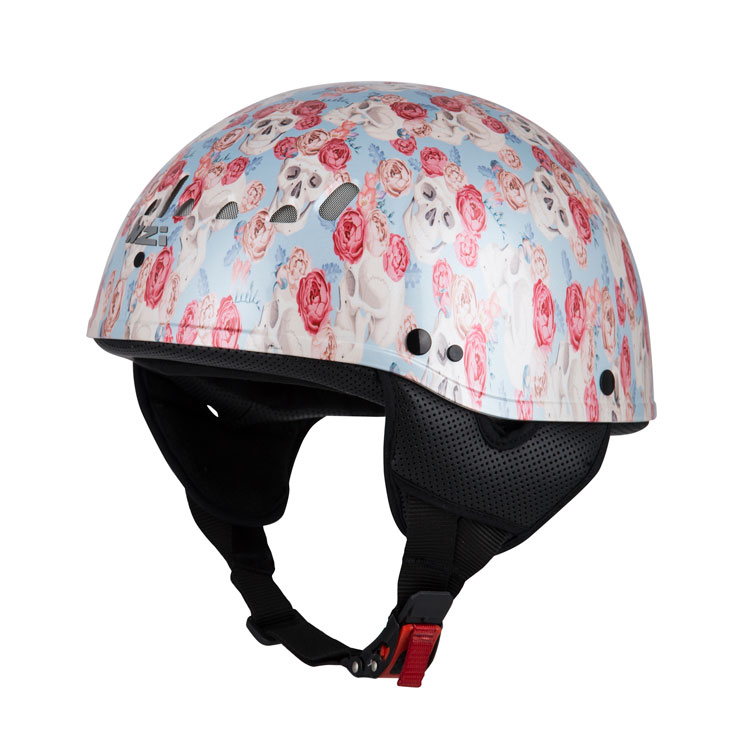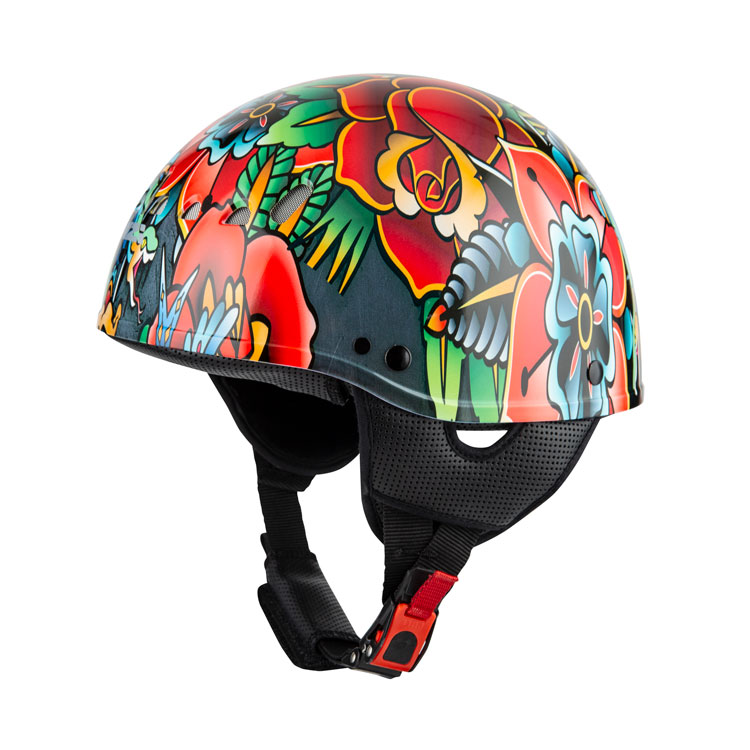Frequently Asked Questions
This section has been implemented with the purpose of collecting all the doubts of our customers that are often common to others and to be able to send them the answer in the most comfortable and efficient way.
We are also open to receive your suggestions through our web page and if we consider that they can be useful for other users we will publish them in this section.
Helmets can be divided into different categories depending on their shape, the material used in the manufacture of the protective outer shell and the type of use.
Categories depending on the shape:
a) OPEN. It is a helmet that protects the skull and does not protect against frontal impacts to the jaw.
b) INTEGRAL – A helmet that fully protects the head against all types of impacts and whose outer shell is made of a single piece.
c) ABATIBLE – A helmet whose outer shell is composed of two pieces, one to protect the skull and the other used to close the front part of the helmet. The latter can be opened or closed. Do not drive with the moving part in the open position.
Categories depending on the material of manufacture of the external protective casing:
a) Termoplástico. Housing made of plastic material by injection molding. This process reduces manufacturing and material costs. For this reason, this type of helmet is the most affordable.
b) Composite – This is a helmet made by mixing different components and with a more complicated manufacturing process. The structural performances of these hulls are better balanced in terms of protection and in terms of weight than those of thermoplastics.
To choose the right helmet size, you should measure the head circumference approximately 2cm above the eyebrows. The result will be a measurement in centimeters. Look for this number on the helmet marking and test it.
When in doubt between two sizes, always choose the one that fits you best without being uncomfortable. The comfort interior of the helmets tends to sag with use.
In order to clean the helmet, you can only use water and neutral soap to clean the screen and the helmet. Be careful with the screens; the treatment inside is vulnerable to friction and sharp objects. If the helmet has a removable and washable interior, the same procedure should be used; to remove the foam left by the soap, simply use clean water. The fabric should be left to dry on its own and never wrung out. To wash the side pads, the fabric can be removed and washed separately. This way the drying process is faster.
Caution: Always read the user’s manual before removing parts from the helmet.
In short, you can’t.
In some cases, even composites contain parts of technical plastics, so the application of any type of paint containing chemical solvents is not recommended.
The hull can be seriously damaged by common substances without the damage being visible to the naked eye. We recommend that you do not apply paints, oils or any other type of chemical solvents to the helmet.
At www.3dhelmetsnzi.com you will find a number of models available for customization. Here you can see a video tutorial that explains the whole process.
The helmet protects your head and should therefore be treated with care. It should be replaced if it receives a hard blow or is damaged by improper use. In case of an accident, even a minor one, the helmet must be replaced even if it shows no signs of damage. Never leave the helmet exposed to the sun or other sources of excessive heat (such as the motorcycle’s exhaust pipe, among others).
With normal use, the average life of a plastic helmet is 5 years, the average life of a plastic helmet is 5 years.
composite hull is 7 years.
The screen should be replaced as soon as scratches on the screen do not allow a good view. A scratched screen could be dangerous in night use.
Caution: Always read the user’s manual before removing parts from the helmet.
From a protection point of view, they are exactly the same. The helmets used by our pilots are the same as those sold in stores with the exception of some aerodynamic attachments used to improve the pilot’s performance. These attachments are specially designed for each rider-bike combination. All these analyses and works allow us to have a deep knowledge in aerodynamics and ventilation that we later apply to improve our models.
They are high-impact technical plastics whose macromolecules are freely disposable, thanks to this disposition, they are able to melt with heat and thus acquire the desired shape, which they have when cooled. Injection molding is usually performed by the injection molding technique.
Composite material in which two or more different and structurally complementary substances, especially polymers, glass fibers, carbon fibers, aramids (kevlar), etc., are combined to produce high structural performance.
To be marketed in different countries, the helmet must comply with the technical requirements imposed by each country.
There are technical and bureaucratic requirements. Homologation is the certification, made by the Competent Authority of the country where the helmet is to be marketed, that the product complies with the technical requirements that the country has adopted to authorize/permit its commercialization.
In all European countries the required standard is the same: R-22 ECE (United Nations). The approval granted by one country is valid for marketing in all countries adopting the same Regulation.
Caution: For your safety, always wear an approved helmet.
ECE regulations require helmets to have a label permanently affixed to the fastening system strap.
The information that can be found on the label is as follows:
- a) A circle containing a capital E followed by a number. This number determines the country that has granted type approval for this type/model of helmet.The country codes are as follows:1 Germany, 2 France, 3 Italy, 4 Netherlands, 5 Sweden, 6 Belgium, 7 Hungary, 8 Hungary, 8 Rep. Czech Republic, 9 Spain, 10 Serbia and Montenegro, 11 United Kingdom, 12 Austria, 13 Luxembourg, 14 Switzerland, 15 (vacant), 16 Norway, 17 Finland, 18 Denmark, 19 Romania, 20 Poland, 21 Portugal, 22 Russian Federation, 23 Greece, 24 Ireland, 25 Croatia, 26 Slovenia, 27 Slovakia, 28 Belarus, 29 Estonia, 30 (vacant), 31 Bosnia and Herzegovina, 32 Latvia, 33 (vacant), 34 Bulgaria, 35 (vacant), 36 Lithuania, 37 Turkey, 38 (vacant), 39 Azerbaijan, 40 Former Yugoslav Republic of Macedonia, 41 (vacant), 42 European Union (Approvals are given by the countries with their respective numbers), 43 Japan, 44 (vacant), 45 Australia, 46 Ukraine, 47 South Africa and 48 New Zealand. The following numbers shall be assigned consecutively to other countries in the chronological order in which they ratify or accede to the Agreement Concerning the Adoption of Uniform Technical Conditions for Wheeled Vehicles, Equipment and Parts which can be Fitted and/or be Used on Wheeled Vehicles and Conditions for Reciprocal Recognition of Approvals Granted on the Basis of these Conditions.
- b) A first series of numbers 051940/J whose meaning is as follows: The first two numbers, in this case 05, mean that the helmet has been approved according to the 05 Series of Amendments to the Regulation. The following four numbers, in this case 1940, are the approval number that the Authority has granted to the manufacturer for this specific type/model.
- The letter after the stroke, in this case, J, means that the level of protection of the helmet is as follows:
- J: the helmet does not protect against frontal jaw impacts.
- Q: the helmet protects against frontal jaw impacts.
- NP: The helmet is not a jet helmet but it does not protect the chin guard against frontal impacts.
- c) A second set of numbers indicating the serial identification number for each hull.
Caution: For your safety, always wear an approved helmet.
On our NZI Tech Com 1.0 which was sold from 2007 to July 2010: With the Garmin Zumo the compatibility is total and the devices do not present any problem to pair. In the case of wearing a helmet paired to the navigator, the intercom functionality is no longer enabled and the system can only be used as a receiver of instructions from the navigator and of phone calls that are managed through the navigator itself. In the case of the Tomtom Rider II, the representatives in Spain of the manufacturer have reported that they have made changes in the software to be able to pair with our system, these changes can be downloaded on the device through the Tomtom website, however we continue to observe that the system does not pair easily so we can not recommend this product in combination with our NZI Tech Com until the Tomtom website is recognized as compatible.
In Tech Com Basic and Tech Com Intercom, which have been on sale since September 2010: Compatibility is with all existing motorcycle navigators and with those that can transmit voice instructions via Bluetooth®.
Interoperability is ensured by passing the qualification tests established by Bluetooth SIG.
The NZI Tech Com system features HF (Hands Free) and HS (Head Set) audio profiles and, when paired, is presented in visible mode in both. It is the telephone terminal that performs the search and finds or does not find our system.
There are times when certain phone handsets are put on the market and are not fully compatible with all devices using Bluetooth® technology. Usually, after the fact, the terminal manufacturer updates its software, which can be downloaded to the terminal through its website, and then the pairing problems are solved.
Our recommendation is to try pairing the terminal before purchasing it to make sure that it works correctly in the first software version of the terminal.
On our NZI Tech Com 1.0 which was sold from 2007 to July 2010The NZI Tech Com system uses Bluetooth® wireless technology, so any music playing device capable of streaming music through this technology can be heard in the helmet if it recognizes the HF (Hands Free) or HS (Head Set) profiles as valid. It should be emphasized that the NZI Tech Com System is not specifically designed for listening to music so the quality of hearing will not be the same as in a system dedicated to this specific purpose.
In Tech Com Basic and Tech Com Intercom which have been available since September 2010: Both models support the A2DP profile which ensures stereo music listening in addition to the typical HF and HS profiles.
In our NZI Tech Com 1.0 which was sold from 2007 to July 2010: Since the 2009 version the NZI Tech Com system is prepared to install a second loudspeaker with which the hearing improves substantially. The second loudspeaker is sold separately in KIT 3 and is extremely easy to install. To connect it, simply place the right pad and connect the cables provided for this purpose.
In Tech Com Basic and Tech Com Intercom which have been on sale since September 2010: Both models are stereo so they have two speakers and, effectively, can be heard in both ears.
On our NZI Tech Com 1.0 which was sold from 2007 to July 2010: Since the 2009 version the NZI Tech Com system is pre-equipped to install a second loudspeaker with which the hearing is substantially improved. The second loudspeaker is sold separately in KIT 3 and is extremely easy to install. To connect it, simply place the right pad and connect the cables provided for this purpose.
In Tech Com Basic and Tech Com Intercom which have been on sale since September 2010: Both models are stereo so they have two speakers and, effectively, can be heard in both ears.



